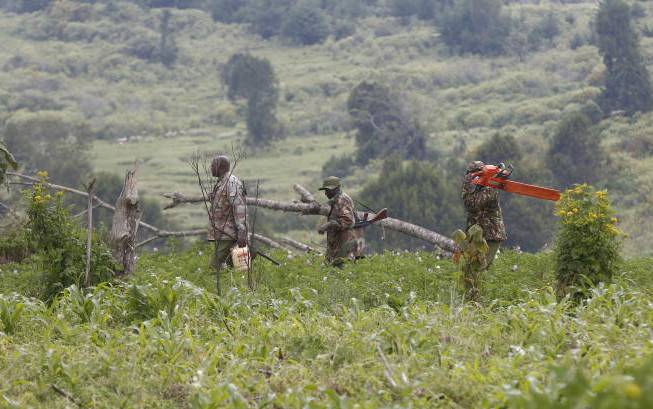×
The Standard e-Paper
Kenya's Bold Newspaper

Kenya Forest Service officers (KFS) during an operation to flush out illegal settlers at Marioshoni Forest in the Mau Forest Complex on June 3, 2020. [Kipsang Joseph, Standard]
When the history of conservation in the country is finally written, Mau forest will occupy several chapters.